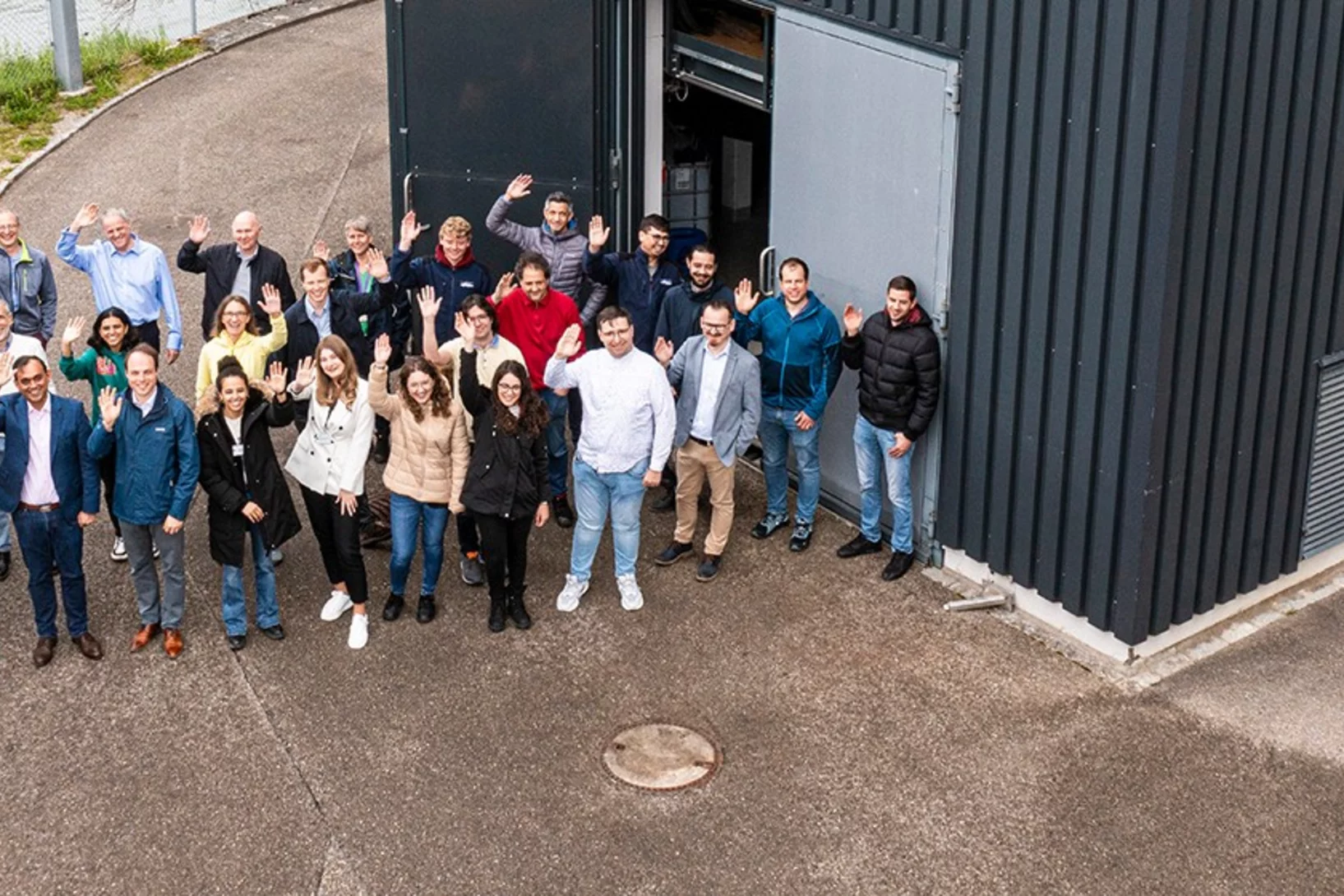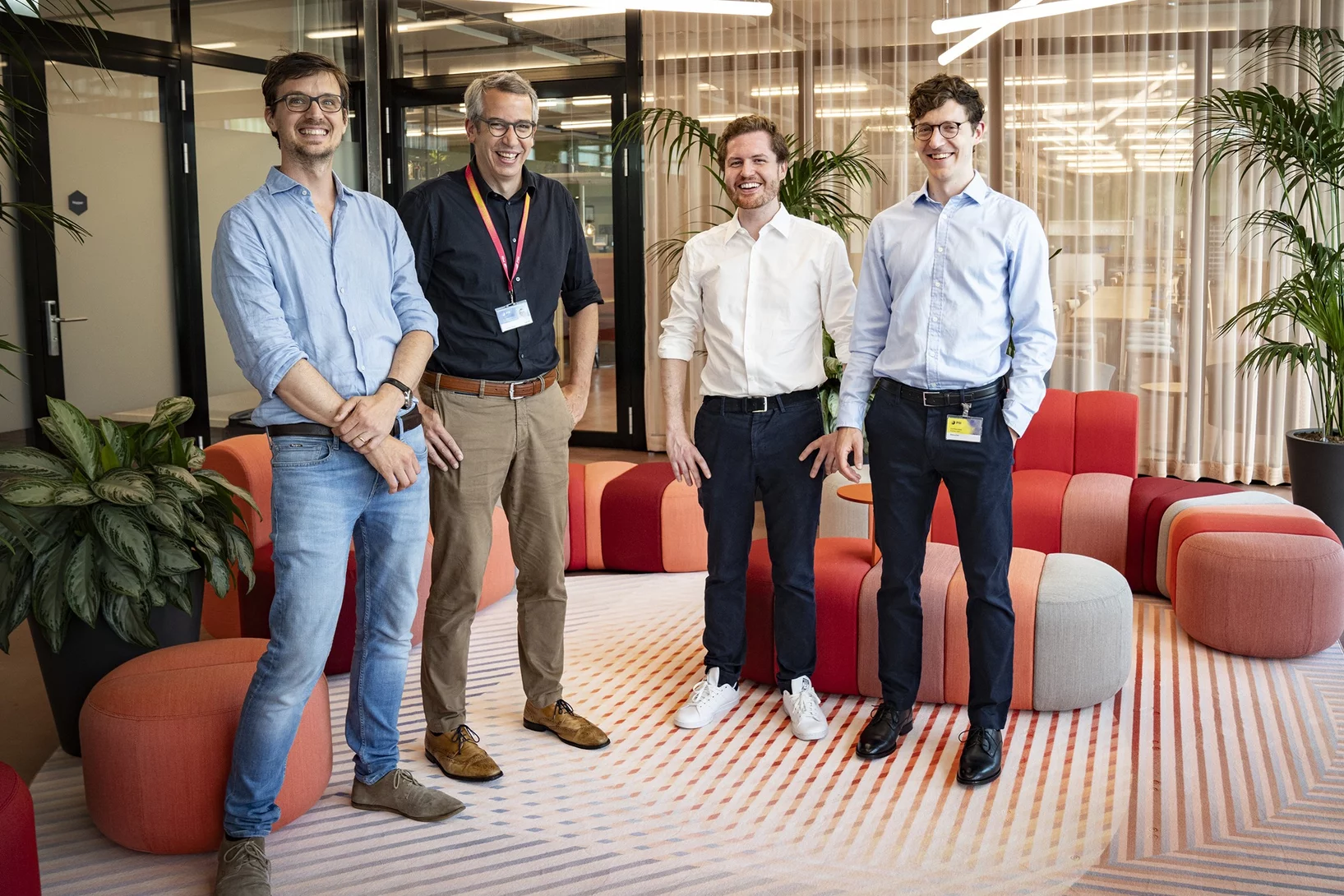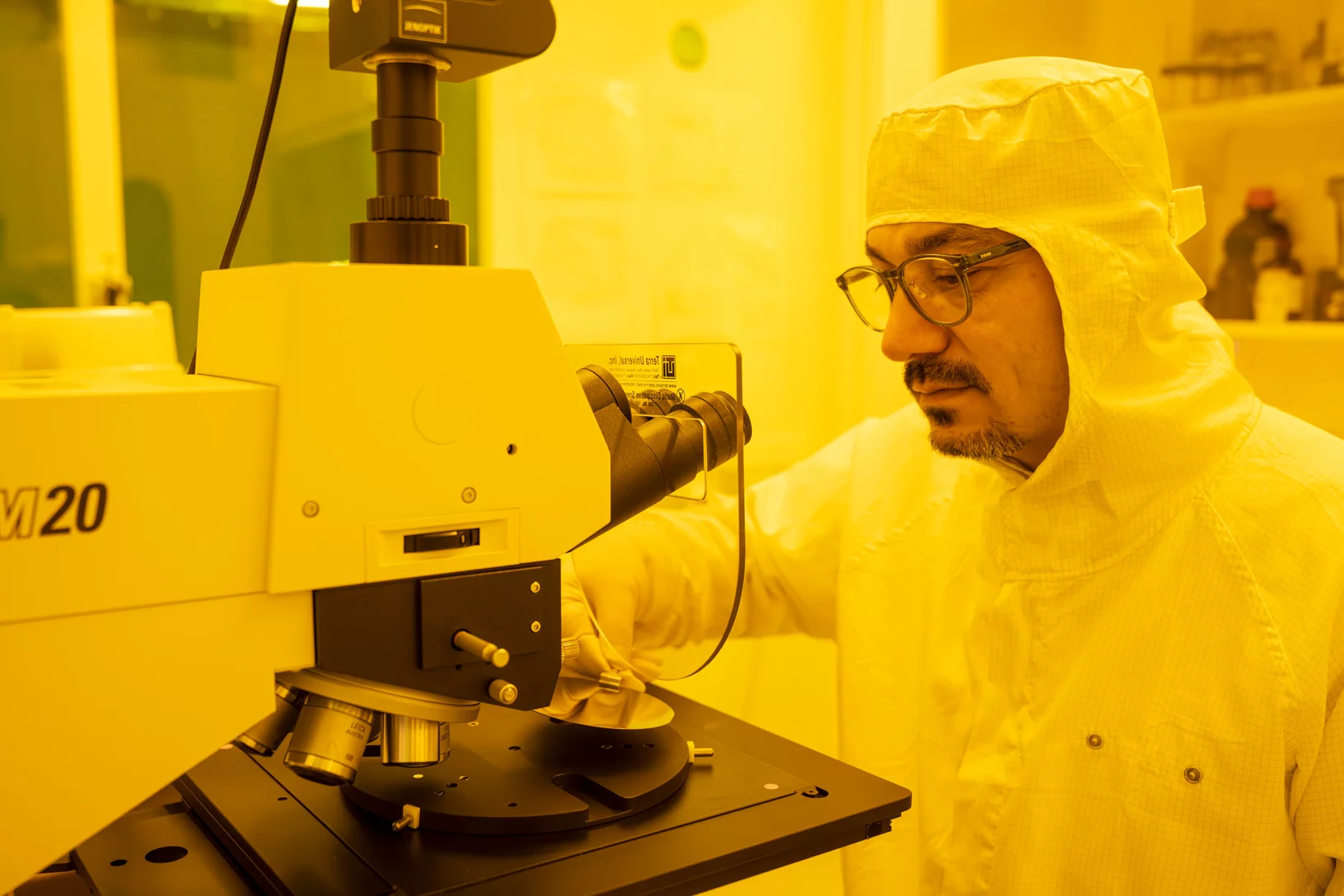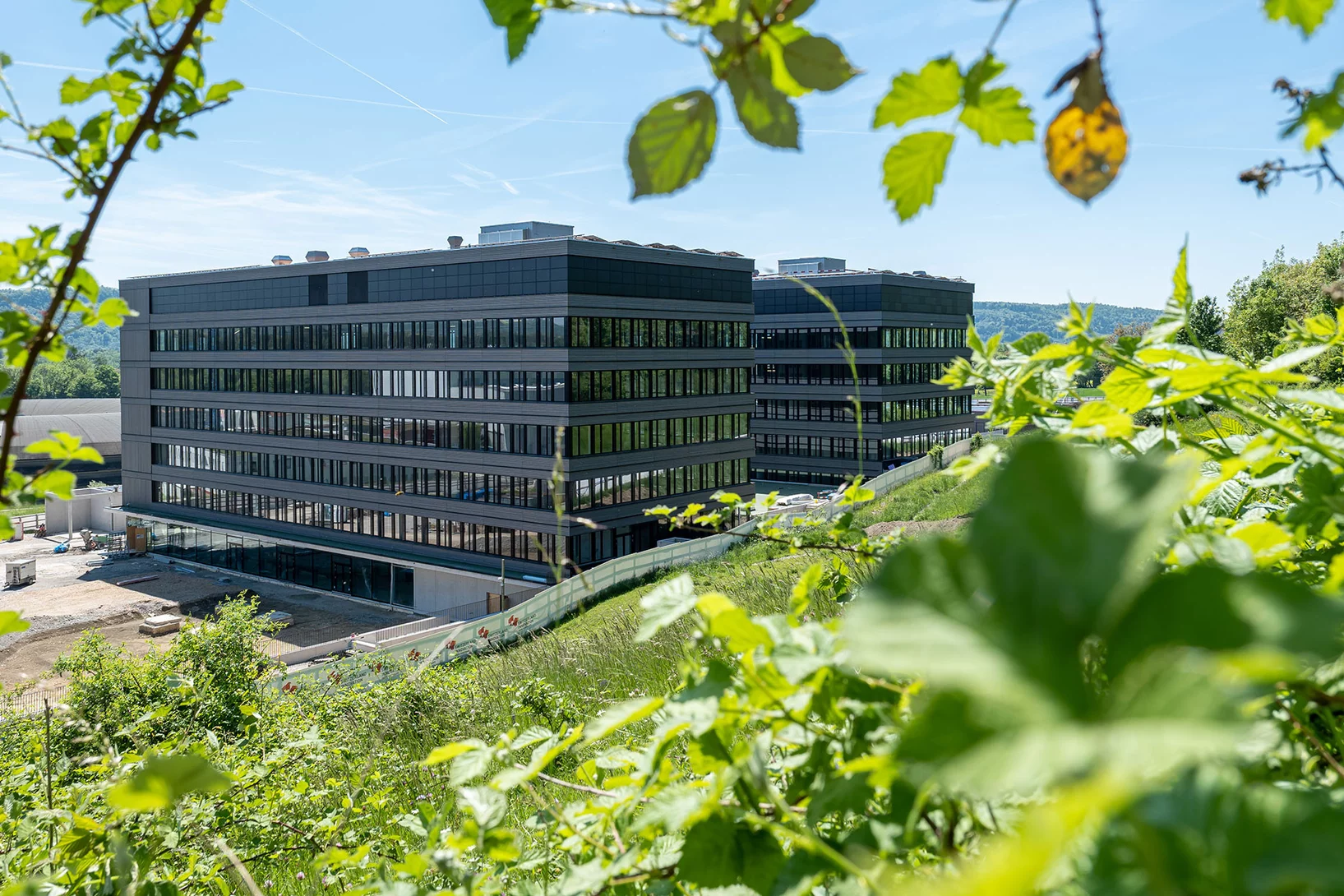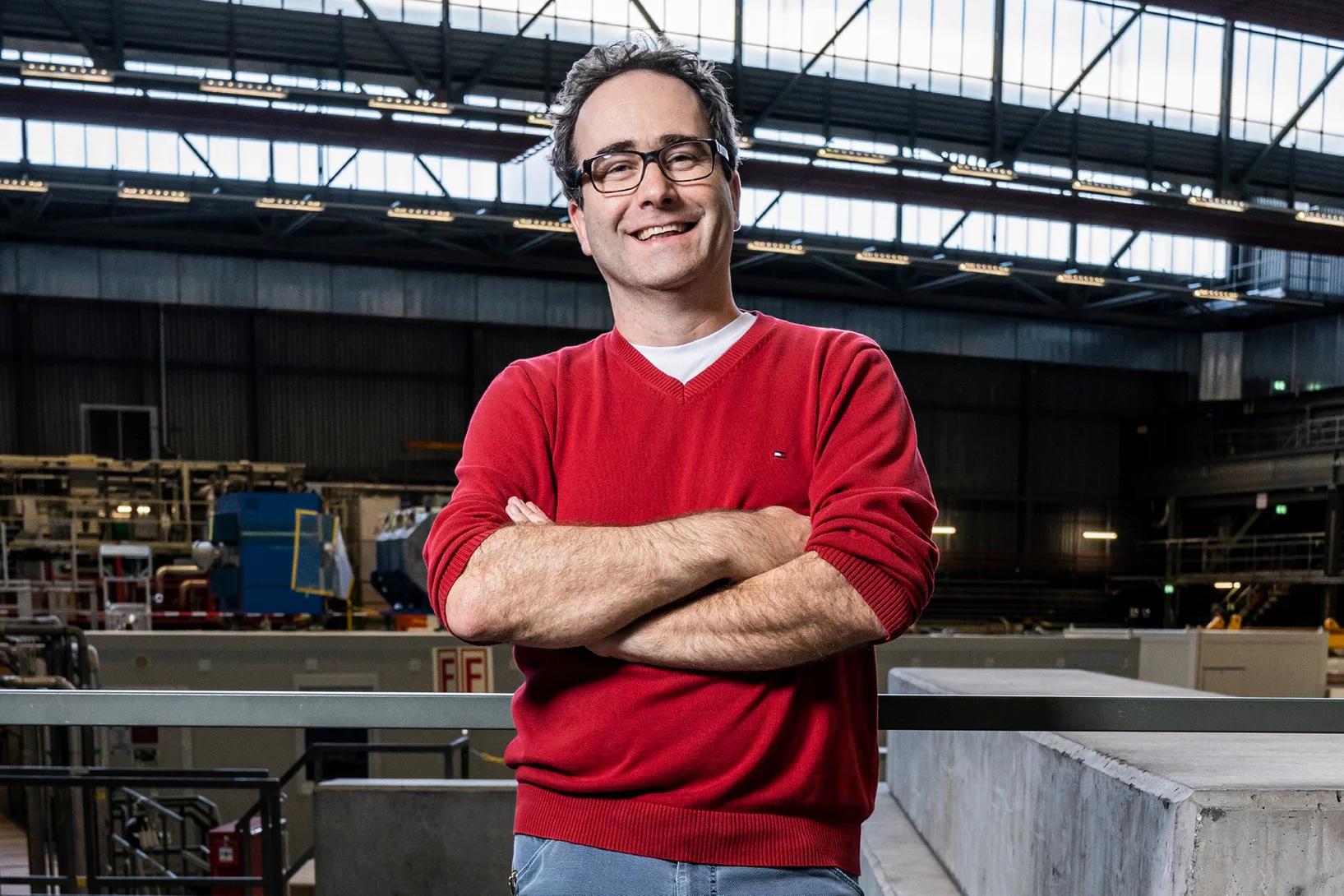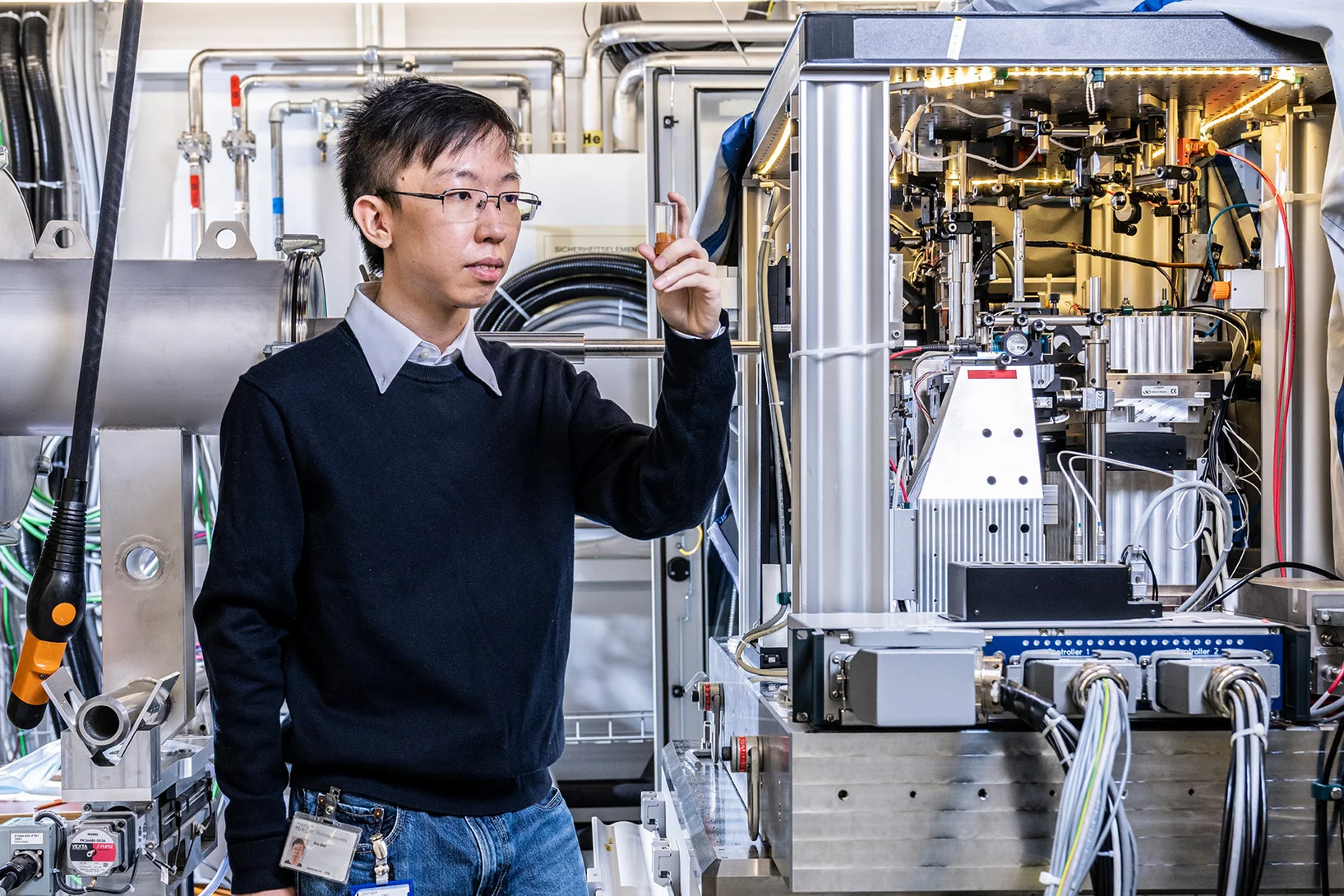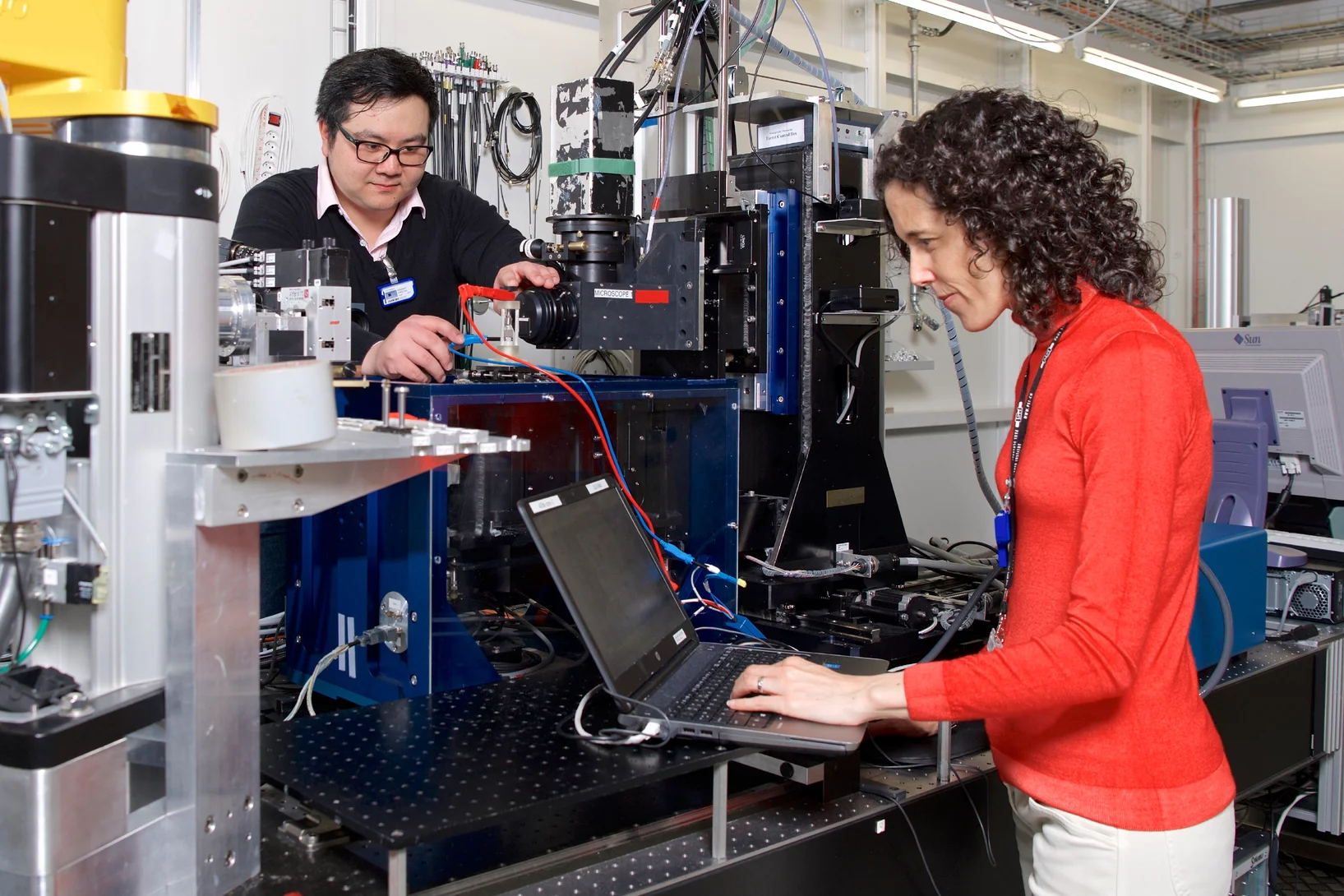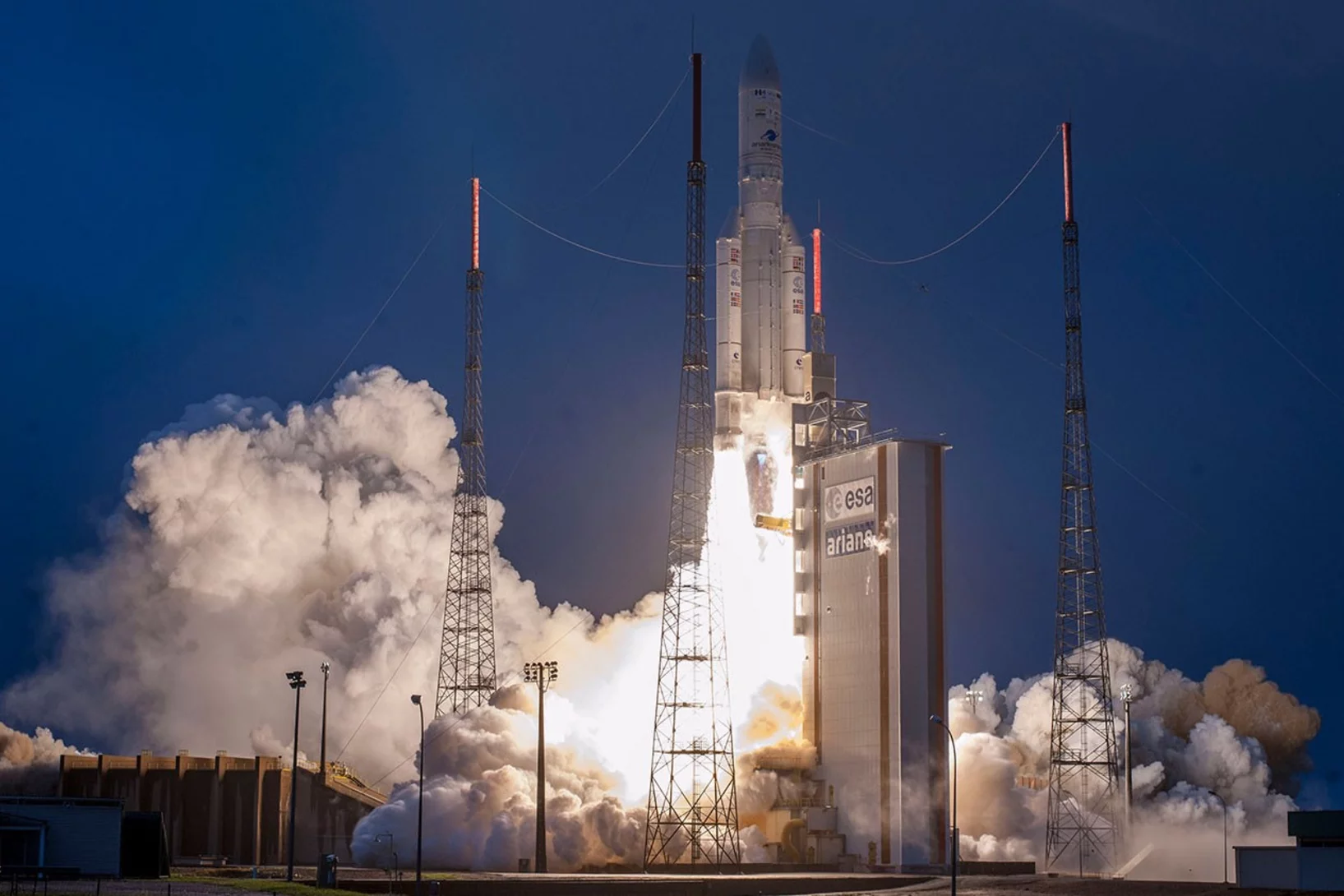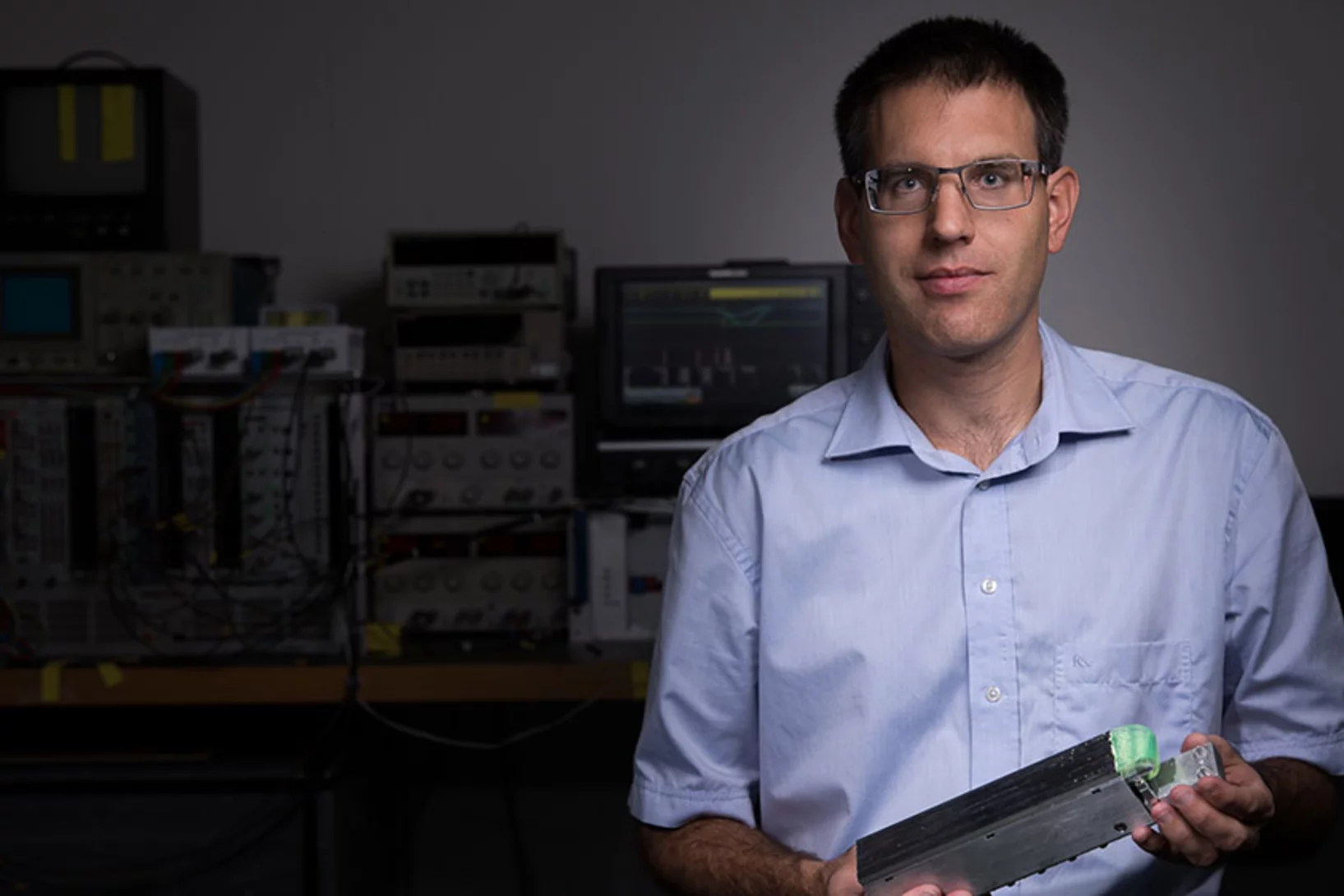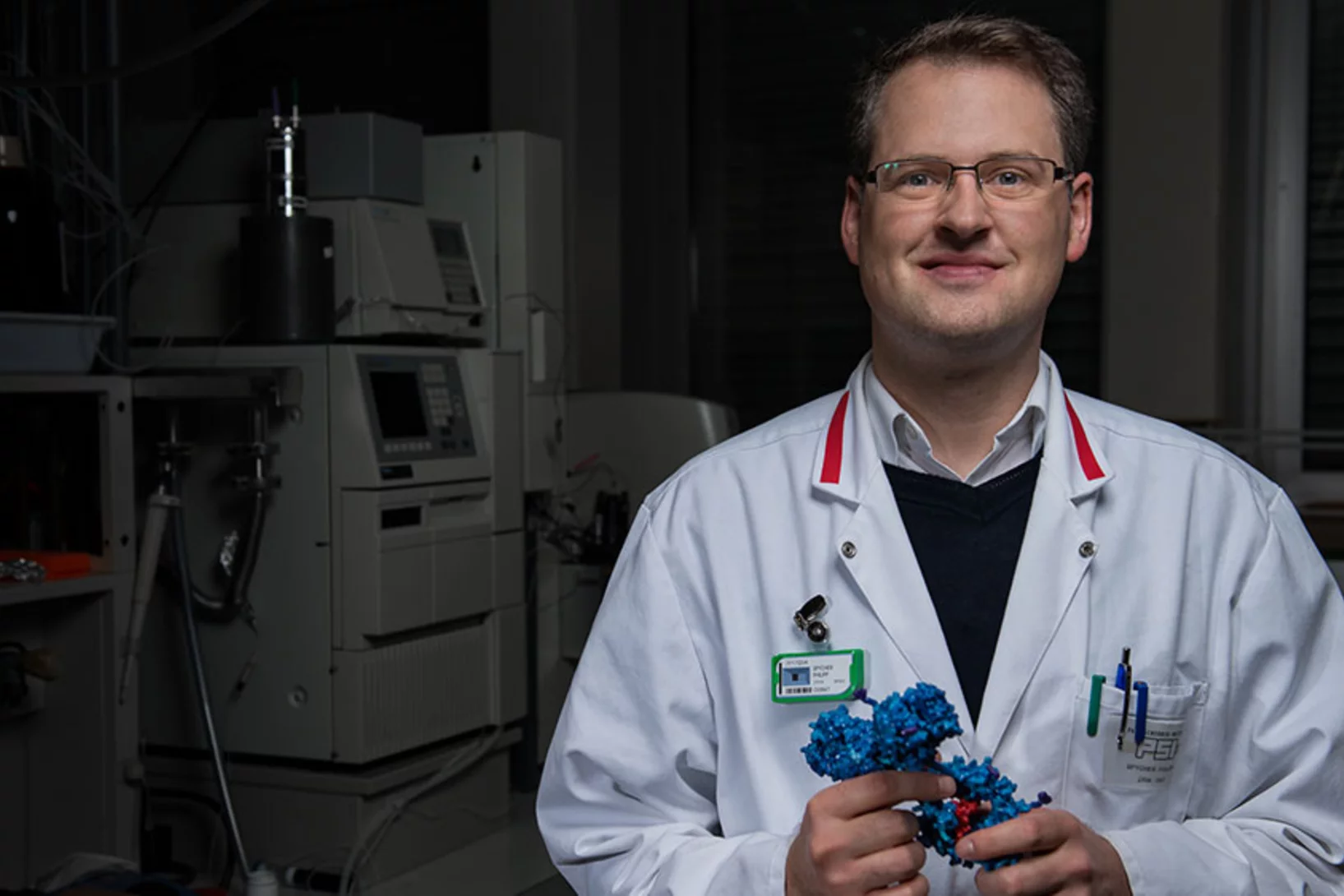Show filters
Zinc detected in clogged syringes
With the help of researchers at PSI, ANAXAM has been investigating, on behalf of the pharmaceutical company MSD, whether zinc may contribute to clogging of pre-filled syringes.
ESA Centre of Excellence opens in Switzerland
The opening ceremony of the “European Space Deep-Tech Innovation Centre” ESDI brought together distinguished guests.
A superlative milestone
PSI spin-off Araris Biotech AG achieves valuation at unicorn-level!
ESA comes to Switzerland
The signing of a contract between the European Space Agency ESA and PSI marks the start of the European Space Deep-Tech Innovation Centre ESDI.
How catalysts remove dangerous nitrogen oxides
In industrial catalysis, iron is not equal to iron.
Fast as a plane, clean as a train
In a collaboration across Switzerland, researchers have evaluated the potential environmental impacts of so-called hyperloop systems.
Sustainable aviation fuel from the PSI campus
In collaboration with climate start-up Metafuels, a pilot plant for the production of sustainable aviation fuel is being set up on the PSI campus.
A new Fusion Collaboration
Munich-based Proxima Fusion and PSI have signed a framework agreement.
Cooperation in reactor research
Copenhagen Atomics and the Paul Scherrer Institute PSI have entered into a collaboration agreement on a thorium molten salt critical experiment.
Switzerland Innovation Park Innovaare celebrates opening
After four years of construction, a modern innovation park with 23,000 m2 of clean rooms, laboratories, precision workshops, offices and meeting rooms has been created next to Paul Scherrer Institute PSI in Villigen (AG).
New process for the production of semiconductors
The Paul Scherrer Institute PSI and the Finnish company PiBond to collaborate in the commercialization of advanced EUV semiconductor lithography products.
Bringing SwissFEL light to industrial users
High throughput experiments will enable new structural biology users to benefit from XFEL light.
A greener alternative for aviation fuel
Air travel with no carbon footprint – PSI and the Metafuels AG develop a new technology to produce sustainable aviation fuel.
High-tech company VDL ETG: PSI’s new neighbour
The Dutch company VDL ETG has signed a rental agreement with Park Innovaare.
Swiss PIC to support Swiss photonics industry
The technology transfer centre Swiss PIC will be located in the Park Innovaare.
10 Years anniversary of Excelsus
The PSI spin-off "Excelsus Structural Solutions" performs measurements at the SLS on behalf of customers.
Combining forces for the energy transition
The Paul Scherrer Institute PSI and the start-up AlphaSYNT are piloting a new approach for storing energy in the form of methane gas.
“If you’re in a certain position, you should step forward”
Kirsten Moselund heads the new Laboratory for Nano and Quantum Technologies. In this interview she discusses quantum research at PSI and how nanophotonics can assist with this.
Novel X-ray lens facilitates glimpse into the nanoworld
PSI develops a revolutionary achromatic lens for X-rays.
A lively enterprise zone close by
Park Innovaare located next to PSI is growing, further pursuing its mission to help cutting-edge Swiss research transition to concrete applications and profitable companies.
New catalysts for pharmaceutical companies
In partnership with Roche, PSI scientists are developing new, potentially more efficient catalysts for manufacturing active substances for drug therapies.
Getting maximum energy out of biomass
Researchers at the Paul Scherrer Institute PSI start operation of a revolutionary pilot plant for production of synthetic biogas.
The link between theory and experiment
Without fundamental constants there is no physics.
How catalysts age
Catalysts used in industry change their material structure over the years. Using a new method, PSI researchers have now studied this on the nanoscale.
Patents as trump cards
John Millard is head of Technology Transfer at PSI. Intellectual property also falls within this area. In an interview, he tells how PSI protects its knowledge with patents and, thanks to its patents, further strengthens collaboration with industry and other research institutions.
Research with a patent
At PSI, researchers develop innovative technologies, new biological agents, and more precise measuring instruments. Through this work they not only advance science, but also boost the Swiss economy. The best ideas are protected by patents and make PSI a sought-after partner for industry.
Swiss STIX X-ray telescope sets off for the sun
On 10 February, the ESA mission Solar Orbiter is scheduled to start. The Swiss X-ray telescope STIX will be launching too – with detectors developed at PSI.
Observing solid-state batteries during deformation
PSI researchers have observed mechanical processes in solid-state batteries with unprecedented precision. Using X-ray tomography at the Swiss Light Source SLS, they discovered how fissures inside the batteries propagate. These insights can help to make batteries for electric cars or smartphones safer and more efficient.
PSI imaging helps with rocket launches
PSI researchers are helping the European space program: Their neutron imaging serves to ensure the quality of critical components for rocket launches.
On the go at 200 kilometres per hour
Fabia Gozzo is no woman for the comfort zone. First she made a beamline at the Swiss Light Source SLS of the Paul Scherrer Institute PSI into one of the world's leading facilities. Today she is making her knowledge available to industry with her spin-off.
Licence agreement with Swiss pharma firm for development of a cancer drug
A radioactive agent, developed at the Paul Scherrer Institute PSI to fight an especially malignant form of thyroid cancer, has the potential to become a blockbuster drug. Due to its structure, it might also be able to dock onto cells of other tumours and destroy them with its radiation. The Lausanne-based biopharmaceutical company Debiopharm wants to further develop the PSI agent to the point where it is approved as a drug. Debiopharm and PSI have now created the contractual basis for this.
From researcher to entrepreneur
Towards new shores: At the Paul Scherrer Institute PSI, enterprising researchers are venturing into the unknown. They're leaving their safe haven to become successful entrepreneurs. The journey from PSI to one's own spin-off takes courage. To keep the voyage from getting too stormy, PSI supports its business founders as they navigate through rough waters, and maintains these connections over many years.
Imaging at Paul Scherrer Intitute helps to increase production at ABB site in Aargau
The ABB facility in Wettingen got practical recommendations on increasing production of ceramic components. Researchers at the Paul Scherrer Institute PSI examined the components by means of neutron imaging. With the help of these images, ABB employees were able to see where there is still potential for process optimisation. This feasibility study was funded by the Hightech Zentrum Aargau.
Efficient energy from biowaste – Watt d'Or for PSI and Energie 360°
Efficiently producing energy from biowaste: A technology developed at PSI and tested in collaboration with the Zurich-based energy provider Energie 360° makes it possible. It extracts significantly more methane from biowaste than conventional methods. For this important contribution to a sustainable energy supply, PSI and Energie 360° have now been awarded the Watt d'Or 2018 in the Renewable Energy category by the Swiss Federal Office of Energy.
Power from nanomagnets
Oles Sendetskyi, winner of a Founder Fellowship at the Paul Scherrer Institute PSI, wants to use polarity reversal in nanomagnets to develop a sustainable power source for small devices.
More than a prototype
Jean-Baptiste Mosset, winner of a Founder Fellowship at the Paul Scherrer Institute PSI, wants to commercialise a neutron detector to spot plutonium and uranium.
A new bio-robot
With a new method for modifying antibodies, Philipp Spycher, winner of a Founder Fellowship at the Paul Scherrer Institute PSI, wants to develop drugs that are more stable and, thus, have fewer side-effects.
Stress test passed
With a technology developed at the Paul Scherrer Institute PSI, around 60 percent more biogas can be produced from bio-waste than with conventional methods. But can it stand the test in practice as well? A 1,000-hour test at the Werdhölzli biowaste digestion and wastewater treatment plant in Zurich was able to answer this question with a clear yes. It was carried out in cooperation with the Zurich-based energy provider Energie 360°. The analysis of the stress test is now available.
More than just spilling the beans
Because of their high nitrogen content, spent coffee grounds are a popular garden fertilizer. Recycled in this manner, they already contribute to an environmentally friendly waste management. But they have the potential to deliver much more: a new procedure developed at the PSI allows high quality methane to be formed from spent coffee grounds. PSI researchers involved in a pilot project carried out in cooperation with the Swiss food producer Nestlé were able to show that spent coffee grounds left over during the production of instant coffee can be efficiently re-used elsewhere.
Higher methane yield from bio-waste
Within Switzerland’s bio-waste a huge amount of precious energy is hidden. That’s because valuable methane, the main constituent of natural gas, can be obtained from it. With a technology developed at PSI, the yield of methane from bio-waste could be increased considerably in the future. A long-term test conducted in cooperation with Energie 360° at the Werdhölzli fermentation and wastewater treatment plant is expected to advance this technology further along its path to industrial use.
Renewable energy: Experimental platform ESI is starting up
This fall, the time has come: The Energy System Integration Platform at the Paul Scherrer Institute PSI goes into operation. Today, in the framework of the double conference Networked Energy Research Switzerland, it was presented to the media and around 150 representatives from politics, industry, and science.
From the Higgs boson to new drugs
A picture-perfect example of how basic research makes concrete contributions to the economy is the company DECTRIS — a PSI spin-off founded in 2006 and already highly successful. The latest development from DECTRIS is a detector called EIGER, which is used for X-ray measurements at large research facilities. There EIGER contributes, among other things, to the search for new drugs.
Competitive thanks to high pressure
Various basic materials for the chemical industry are manufactured using technology developed by the Ticino based company, Casale. The chemical compounds produced serve to make products like synthetic fertilisers or Plexiglas. In co-operation with PSI, Casale aims to make these production processes even more efficient as basic chemical products are export goods that face stiff competition around the globe. Tiny differences in production costs can be decicive when it comes to which licence a plant operator goes for.
New Renewables on integration course
The Swiss government’s Energy Strategy 2050 includes a significant expansion of renewable energy such as solar and wind power. The integration of this electric energy, which is produced in a decentralised way and with temporal fluctuations, poses a major challenge for power grids. One possible solution involves using the electricity surplus that would otherwise overload the grid for the production of gases such as hydrogen or methane. The electric energy would thus be stored temporarily in form of chemical energy. These gaseous energy carriers can be converted back into electricity, heat or kinetic energy (in gas engines) at a later date as and when needed. Dubbed power to gas, the concept is the focus of the new Energy System Integration (ESI) Platform at PSI.
Fuel cell know-how from the Paul Scherrer Institute at the core of the SBB minibar
On 4 April 2014 SBB is to launch a new minibar model in its Intercity trains. A fuel cell system including know-how of the Paul Scherrer Institute will also be on board. It will ensure that despite the limited space the minibar will have enough power to brew capuccinos and latte macchiatos, too.
Zukünftige Computerchips mit "elektronischem Blutkreislauf"
Im Rahmen des Sinergia-Programms fördert der Schweizerische Nationalfonds das dreijährige Forschungsvorhaben REPCOOL. Unter der Leitung von IBM Research à Zürich arbeiten in diesem Projekt Wissenschaftler der ETH Zürich, des Paul Scherrer Instituts in Villigen und der Università della Svizzera italiana in Lugano gemeinsam an der Erforschung eines elektronischen Blutkreislaufs für zukünftige 3D-Computerchips. Vom menschlichen Gehirn inspiriert, entwickeln die Forscher ein Mikrokanalsystem mit einer elektrochemischen Flussbatterie, die 3D-Chipstapel gleichzeitig kühlen und mit Energie versorgen. Ultimatives Ziel ist die Entwicklung eines Supercomputers in PC-Grösse.This news release is only available in German.
Memory effect now also found in lithium-ion batteries
Lithium-ion batteries are high performance energy storage devices used in many commercial electronic appliances. Certainly, they can store a large amount of energy in a relatively small volume. They have also previously been widely believed to exhibit no memory effect. That’s how experts call a deviation in the working voltage of the battery, caused by incomplete charging or discharging, that can lead to only part of the stored energy being available and an inability to determine the charge level of the battery reliably. Scientists at the Paul Scherrer Institute PSI, together with colleagues from the Toyota Research Laboratories in Japan have now however discovered that a widely-used type of lithium-ion battery has a memory effect. This discovery is of particularly high relevance for advances towards using lithium-ion batteries in the electric vehicle market. The work was published today in the scientific journal Nature Materials.
The golden way to choke harmful exhaust gases
Exhaust gases produced by diesel combustion are freed from harmful nitrogen oxides with the aid of an aqueous urea solution. That’s the state of the art. The urea decomposes into ammonia and this, in turn, reduces the nitrogen oxides into harmless nitrogen. However, the urea solution can produce undesirable solid residues and, in addition, freeze in extremely cold weather. Now researchers at the Paul Scherrer Institut (PSI) have developed a catalyst which can be used with better reducing agents than urea for nitrogen oxide reduction.







